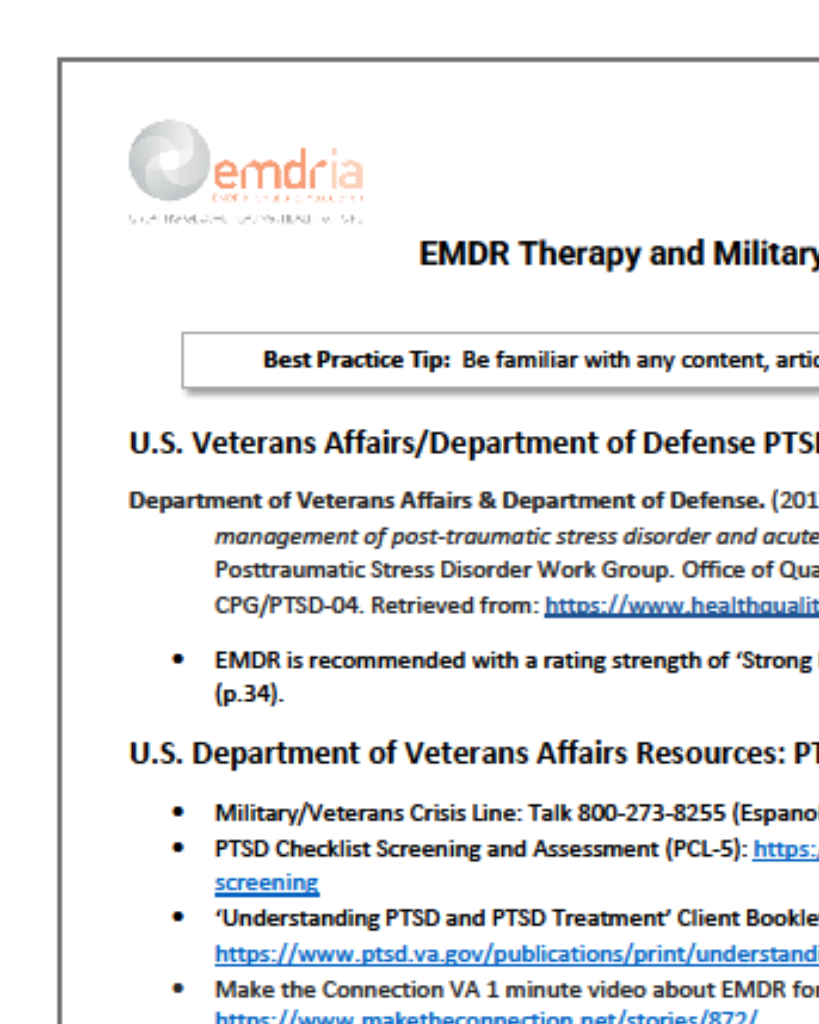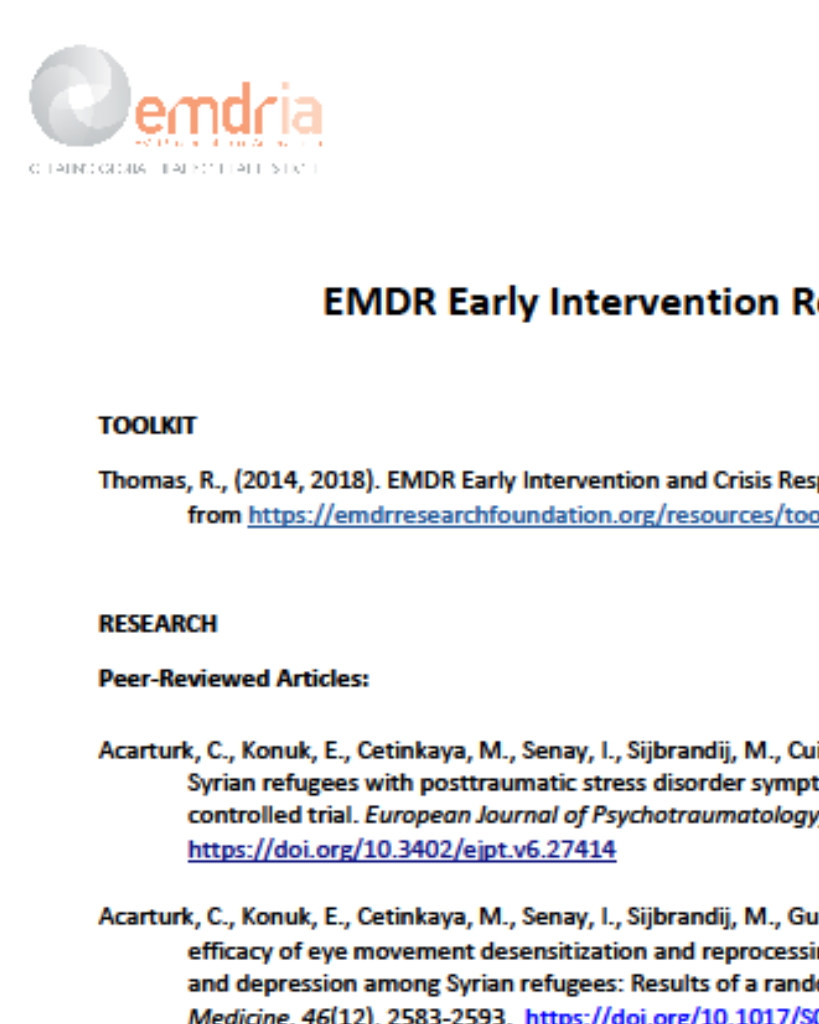Effectiveness of EMDR in patients with substance use disorder and comorbid PTSD: Study protocol for a randomized controlled trial
This study aims to expand the knowledge about the effectiveness of EMDR in patients with substance use disorder and comorbid PTSD.
Article Abstract
“Background: Eye Movement Desensitization and Reprocessing (EMDR) is an evidence-based treatment for PTSD. However, it is unclear whether EMDR shows the same effectiveness in patients with substance use disorders (SUD) and comorbid PTSD. In this trial, we examine the effectiveness of EMDR in reducing PTSD symptoms in patients with SUD and PTSD.
Methods/Design: We conduct a single-blinded RCT among 158 patients with SUD and comorbid PTSD admitted to a German addiction rehabilitation center specialized for the treatment of patients with SUD and comorbid PTSD. Patients are randomized to receive either EMDR, added to SUD rehabilitation and non-trauma-focused PTSD treatment (TAU), or TAU alone. The primary outcome is change from baseline in PTSD symptom severity as measured by the Clinician-Administered PTSD Scale at 6-month follow-up. Secondary outcomes are change from baseline in substance use, addiction-related problems, depressive symptoms, dissociative symptoms, emotion dysregulation and quality of life. Assessments are carried out by blinded raters at admission, at end of treatment, and at 3- and 6-month follow-up. We expect that EMDR plus TAU will be more effective in reducing PTSD symptoms than TAU alone. Mixed models will be conducted using an intention-to-treat and per-protocol approach.
Discussion: This study aims to expand the knowledge about the effectiveness of EMDR in patients with SUD and comorbid PTSD. The expected finding of the superiority of EMDR in reducing PTSD symptoms compared to non-trauma-focused PTSD treatment may enhance the use of trauma-focused treatment approaches for patients with SUD and co-morbid PTSD.”
—Description from publisher
Article Access
Open Access
Schafer, I., Chuey-Ferrer, L., Hofmann, A., Lieberman, P., Mainusch, G., & Lotzin, A. (2017). Effectiveness of EMDR in patients with substance use disorder and comorbid PTSD: Study protocol for a randomized controlled trial. BMC Psychiatry, 17, 95. Open access: https://doi.org/10.1186/s12888-017-1255-9
Date
March 1, 2017
Creator(s)
Ingo Schäfer, Laycen Chuey-Ferrer, Arne Hofmann
Contributor(s)
Peter Lieberman, Günter Mainusch, Annett Lotzin
Topics
Addictions, PTSD
Practice & Methods
Efficacy
Extent
7 pages
Publisher
BMC Psychiatry
Rights
This article is distributed under the terms of the Creative Commons Attribution 4.0 International License (http://creativecommons.org/licenses/by/4.0/), which permits unrestricted use, distribution, and reproduction in any medium, provided you give appropriate credit to the original author(s) and the source, provide a link to the Creative Commons license, and indicate if changes were made. The Creative Commons Public Domain Dedication waiver (http://creativecommons.org/publicdomain/zero/1.0/) applies to the data made available in this article, unless otherwise stated.
APA Citation
Schafer, I., Chuey-Ferrer, L., Hofmann, A., Lieberman, P., Mainusch, G., & Lotzin, A. (2017). Effectiveness of EMDR in patients with substance use disorder and comorbid PTSD: Study protocol for a randomized controlled trial. BMC Psychiatry, 17, 95. Open access: https://doi.org/10.1186/s12888-017-1255-9
Audience
EMDR Therapists, Other Mental Health Professionals
Language
English
Content Type
Article, Peer-Reviewed
Access Type
External Resource, Open Access





